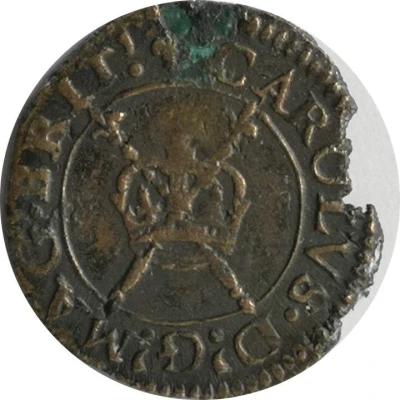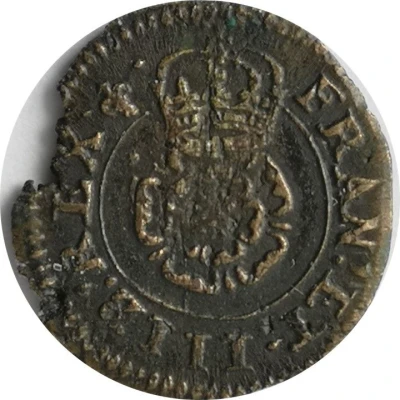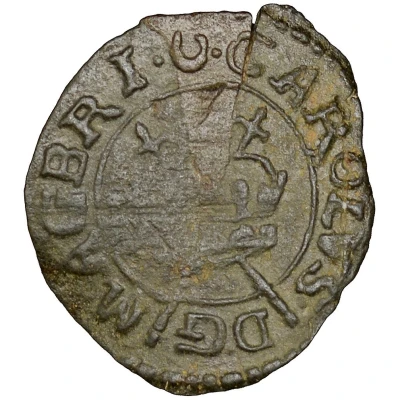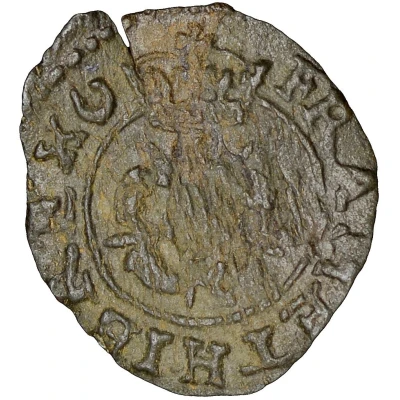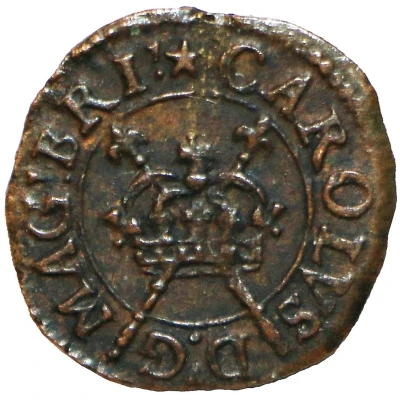
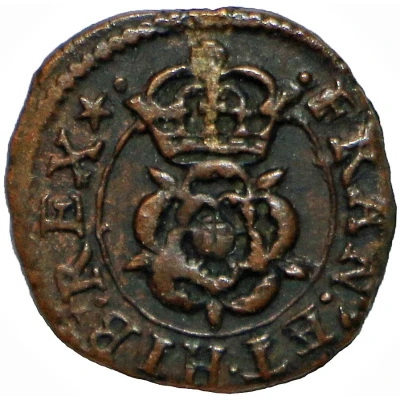

© John Conduitt (CC BY-SA)
1 Farthing - Charles I Rose issue; type 3 ND
| Copper (with brass wedge) | 0.8 g | 14 mm |
| Issuer | England (United Kingdom, British Overseas Territories and Crown Dependencies) |
|---|---|
| King | Charles I (1625-1649) |
| Type | Token |
| Years | 1636-1643 |
| Value | 1 Farthing (1⁄960) |
| Currency | Pound sterling (1158-1970) |
| Composition | Copper (with brass wedge) |
| Weight | 0.8 g |
| Diameter | 14 mm |
| Shape | Round (irregular) |
| Technique | Hammered |
| Orientation | Medal alignment ↑↑ |
| Demonetized | Yes |
| Updated | 2024-10-08 |
| Numista | N#42107 |
|---|---|
| Rarity index | 70% |
Reverse
Crowned Tudor rose, two layers of petals, remainder of royal title around.
Script: Latin
Lettering: FRAN: ET: HIB: REX
Unabridged legend: Franciae Et Hiberniae Rex
Translation: France and Ireland
Comment
House of Stuart (1603-49), Charles I (1625-49), Rose farthing, type 3 (1636-43).The obverse legend may end BRIT or BRI. Peck split these into Rose Types 1c (BRIT) and 1d (BRI) but Everson has them all as Type 3.
Privy mark obv/rev combinations:
With BRIT:
Lis/none
none/lis
lis/lis
lis/cross patée
lis/mullet
With BRI:
Lis/none
Lis/lis
Cross patée/lis
Cross patée/none
Lis/mullet
Mullet/lis
Mullet/mullet
In 1636, directions were given to Lord Maltravers and Sir Francis Crane “to make a new sort of farthing token which should have a little brass in the middle of the copper to distinguish the true farthings from forgeries.” The harp on the reverse was replaced by a rose, hence these pieces are known as the Rose farthings, and are the last made under the patent of Charles I, which was abolished during the interregnum.
Interesting fact
One interesting fact about the Token 1 Farthing - Charles I (Rose issue; type 3) ND (1636-1643) from England is that it was made with a unique combination of copper and brass. The coin features a brass wedge, which was used to prevent counterfeiting, as it was difficult to replicate the exact alloy of copper and brass used by the Royal Mint. This feature makes the coin particularly interesting to collectors and historians, as it showcases the innovative techniques used by the Royal Mint during this time period.
